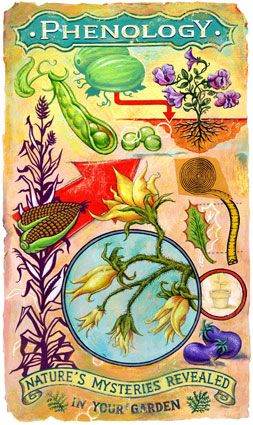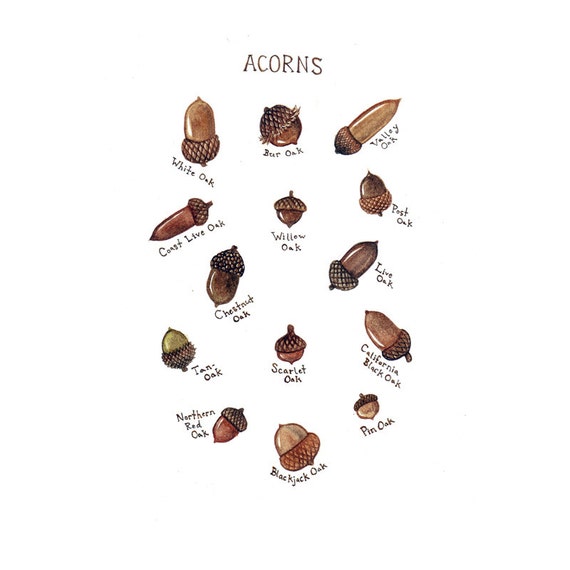





 32
32




Mike Gaughan wrote:The term you are looking for is "phenology", defined by Wikipedia as the "study of periodic plant and animal life cycle events and how these are influenced by seasonal and interannual variations in climate, as well as habitat factors (such as elevation)."
I began using planting signs this gardening season with good success. Some signs I use here in central Connecticut (Zone 6) include:
plant peas when the daffodils bloom or spring peepers sing
plant spring veggies when dandelions are in bloom or the lilacs have leafed out
plant bush beans and summer squash when the lilac flowers have faded
transplant tomatoes, peppers, and eggplant when the bearded iris is in bloom.
I did transplant kale, cabbage, and chard according to a calendar date based on X number of weeks before the last frost date. The plants were severely set back by a hard, lingering winter here in New England. The "rescue" transplants that I set out when the dandelions bloomed did just fine. Lesson learned! This stuff is for real, because the native vegetation are far more tuned into soil temperatures and day length than are we, the gardeners.
Peas when the Crocuses, Forsythia, and/or Daffodil bloom.
Swiss chard, spinach, beets and onions when Daffodils are in bloom.
Potatoes when the first Dandelion blooms.
Beets, carrots, cole crops, lettuce, and spinach when the Lilac is in first leaf.
Beans, cucmbers, and squash when the Lilac is in full bloom.
Tomatoes when Lily of the Valley is in full bloom.
Melon and pepper transplants when Irises bloom.
Corn, beans, and cucumbers when apples blossoms start to fall.
Tomatoes, melons, peppers, corn, and beans when Flowering Dogwood is in full bloom.
Tomatoes, melons, and eggplant when Peonies flower.
Fall crop cabbage and broccoli seeds when Mock Orange flowers or after Dogwoods have dropped their flowers.
Plant peas when forsythia and/or daffodils bloom, when red winged blackbird females return, or when chickadees build their nests
Plant potatoes when the first dandelions bloom
Plant beets, carrots, cabbage family crops, lettuce and spinach when lilac leaves unfurl
Plant beans, cucumbers and squash when lilacs are in full bloom
Transplant eggplant, melon, and peppers when irises are in full bloom
Plant corn when apple blossoms begin to fall, or when oak leaves are the size of a squirrel's ear
Plant perennials when maple leaves unfurl
Seed fall cabbage and broccoli when catalpa trees and mock-orange bushes bloom
Set out tomatoes when daylilies start to bloom, or when flowering dogwoods are in bloom

 16
16





A cold front has slowed the spread of spring in the Midwest and Northeast. Spring has arrived in parts of Colorado and Utah 2-3 weeks early.
 1
1




Liz
 6
6




 7
7




 14
14








 6
6




Nicole Alderman wrote: I went searching for more information, and thought I'd compile it here. Since I live in the Pacific Northwest/Cascadia, these are compiled from bloggers in my area. Supposedly it's best to find out the phenology of your own region.
From http://pnwbasicliving.blogspot.in/2011/01/phenology-vs-lunar-gardening.html
Cultivate abundance for people, plants and wildlife - Growing with Nature



 2
2




Wes Hunter wrote:A caution:
A few years ago I was at a farm conference, and a local tomato farmer was talking about how the turkey vultures returned like clockwork on one particular day every year. This year, however, the turkey vultures returned quite early. I don't recall the specifics, but I think it was at least two or three weeks. So the farmer decided to move their production forward that number of weeks, using the turkey vultures as their guide.
Whatever it takes to dodge a time clock.
 5
5




 4
4




Joylynn Hardesty wrote:Many years ago I read that spring planting should be done when oak leaves were the size of a squirrel's ears.
I've observed that here, different oak varieties "spring" over several weeks' time! I'm stuck with the "last frost date" as a guide.
 3
3




Invasive plants are Earth's way of insisting we notice her medicines. Stephen Herrod Buhner
Everyone learns what works by learning what doesn't work. Stephen Herrod Buhner








 4
4




 3
3




Whatever it takes to dodge a time clock.
 3
3




Chris Palmberg wrote:So there are several easy ways to ID oak trees. Burr Oak acorns have a husk that covers all but the tip, and are generally round. Pin Oak acorns are extremely small, roughly 1/2" in diameter. Red & White Oak have similar, classic acorns, but there are differences in the leaves and branches.

Gail Gardner @GrowMap
Small Business Marketing Strategist, lived on an organic farm in SE Oklahoma, but moved where I can plant more trees.








 5
5





 2
2




Whatever it takes to dodge a time clock.
 4
4




 5
5




"Also, just as you want men to do to you, do the same way to them" (Luke 6:31)
 5
5




Work like you were living in the early days of a better nation. --Oysterband
 4
4




We really don't know how much we don't know.
 1
1




El Rowlatt wrote:Hi
Here's a website for phenology in Canada: https://www.naturewatch.ca/plantwatch/
They're not making the links to guide gardeners yet, but it's a start.
Cheers
El
We really don't know how much we don't know.

 9
9





 8
8




How Permies works: https://permies.com/wiki/34193/permies-works-links-threads
My projects on Skye: The tree field, Growing and landracing, perennial polycultures, "Don't dream it - be it! "
 8
8




(Reminder to myself) God didn't say, "well said, well planned, and well thought out." He said, "well done."
Nikki's Wishlist
 8
8
















 5
5




How Permies works: https://permies.com/wiki/34193/permies-works-links-threads
My projects on Skye: The tree field, Growing and landracing, perennial polycultures, "Don't dream it - be it! "
 6
6




 8
8




 9
9




 9
9




"The only thing...more expensive than education is ignorance."~Ben Franklin. "We can easily forgive a child who is afraid of the dark; the real tragedy of life is when men are afraid of the light." ~ Plato
 5
5












 9
9




 9
9





“Live as if you were to die tomorrow. Learn as if you were to live forever.” ― Mahatma Gandhi
 5
5





Explore the Permies Digital Market - ebooks, movies, building plans, courses, and more. Oh my!


 5
5




Rosie Bou wrote:I've read quite a bit about phenology, but central Alabama weather is so erratic I have no idea how to make use of the information that native plants are telling me. It can go from winter to spring and back to winter multiple times around here. Dandelions bloom and even make puff balls here multiple times from January on with short periods of hard winter in between.
Invasive plants are Earth's way of insisting we notice her medicines. Stephen Herrod Buhner
Everyone learns what works by learning what doesn't work. Stephen Herrod Buhner
 6
6




Rosie Bou wrote:I've read quite a bit about phenology, but central Alabama weather is so erratic I have no idea how to make use of the information that native plants are telling me. It can go from winter to spring and back to winter multiple times around here. Dandelions bloom and even make puff balls here multiple times from January on with short periods of hard winter in between.
(Reminder to myself) God didn't say, "well said, well planned, and well thought out." He said, "well done."
Nikki's Wishlist












 6
6




How Permies works: https://permies.com/wiki/34193/permies-works-links-threads
My projects on Skye: The tree field, Growing and landracing, perennial polycultures, "Don't dream it - be it! "












 3
3




How Permies works: https://permies.com/wiki/34193/permies-works-links-threads
My projects on Skye: The tree field, Growing and landracing, perennial polycultures, "Don't dream it - be it! "
 2
2




Invasive plants are Earth's way of insisting we notice her medicines. Stephen Herrod Buhner
Everyone learns what works by learning what doesn't work. Stephen Herrod Buhner

|
"How many licks ..." - I think all of this dog's research starts with these words. Tasty tiny ad:
Homestead Pigs Course
https://permies.com/wiki/365748/Homestead-Pigs
|

